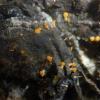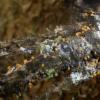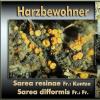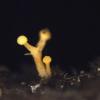
21-12-2025 21:32
Pol DebaenstHello, Garden, Burgweg 19, Veurne, BelgiumOn 10/1

22-12-2025 00:47
Patrice TANCHAUDBonsoir, récolte à proximité du milieu dunaire

21-12-2025 21:40
Isabelle CharissouBonjour, j'aimerais connaitre les références de

21-12-2025 21:31
Pol DebaenstHello, Garden, Burgweg 19, Veurne, BelgiumOn 10/1

21-12-2025 21:31
Pol DebaenstHello, Garden, Burgweg 19, Veurne, BelgiumOn 10/1

20-12-2025 23:08
Patrice TANCHAUDBonsoir, récolte sur sol sablonneux dans l'arri�

21-12-2025 09:32
Hello.A tiny ascomycete found embedded in wood in

20-12-2025 15:47
Mirek GrycHi.These grew on pine wood that was heavily covere

... collected in Switzerland, on resin of Picea. We took a specimen but did not examine it by now (and likely it will take time, because we are moving ...). But I think this looks quite special and perhaps somebody knows it macroscopically?
Regards from Lothar


Hi Zotto,
vielen Dank! Ich werde trotzdem (irgendwann) noch mikroskopieren, aber das haut sicherlich hin.
Liebe Grüße nach Tübingen von Lothar

Hi Erwin,
there are quite a lot of species growing on resin - some of them are quite common, like the most conspicuous Sarea resinae or Lachnellula resinaria. Many species are very easy to overlook, like for instance Sarea difformis, Claussenomyces kirschsteinianus and others, Ciliolarina species and many others.
You should have a look at this substrate by time!
Best regards from Lothar

Hi Peter,
"belong to the lichens"?
Do you mean their hyphae form a thallus that contains algae that feed the Sareas?
I did not know this by now. ... ???
"Lichen" is (in my opinion) only a strategy of feeding that is distributed through a lot of fungal groups. The Lecanoromycetes (class of ascomycetes where Sarea belongs to) contain mainly lichenized fungi. That does not mean that a fungus that belongs here and is not fed by algae can be called a lichen.
Best regards from Lothar
I have once during an excursion with lichens specialists (among other L. Meinunger) agree explained it, however, did not understand so surely. Here I was also asked to announce our Sarea-finding for bigger lichens work.
Greetings Peter.
Yes this is definitely Eustilbum aureum... I find it commonly on resin surrounding self-pruned branches of Picea in Canada.
I have been leisurely collecting from Picea resin over the last few years and the diversity is quite surprising; all of the fungi mentioned by Lothar as well as some interesting hyphomycetes and pycnidial fungi.

Hi Joey,
thank you very much for the confirmation of Zottos suggestion!
Best regards from Lothar
Depite being not familiar with lichens (as with most nonlichenized fungi), i may support your idea of lichens.
Several fungal groups are known to be associated with algae, most of will be ascomycetes, some are basidiomycetes, and i do guess others as well.
In other words, lichen is no systematic term, just naming the symbiotic entity.
Maybe there will be highly adapted ascomycete families or even orders comprising solely lichenized species, however any fungus living free of algae is not to be named a lichen.

this is wonderful to hear. I saw E. aureum only once in the French Alps on Picea resin.
My guess was when I looked at the original description of the teleomorph that it could belong in the Tympanidaceae, maybe in vicinity of Claussenomyces s.auct.
I do not see a sequence in GenBank or in my files. Did you ever try one?
Zotto
I have not sequenced it but I made cultures from several different collections (it forms a nice yellow colony). I remember wanting to verify the anamorph-teleomorph connection that Keith Siefert made and seeing where this fungus belonged phylogenetically, so when time permits I will finally get around to sequencing it and let you know the results.





